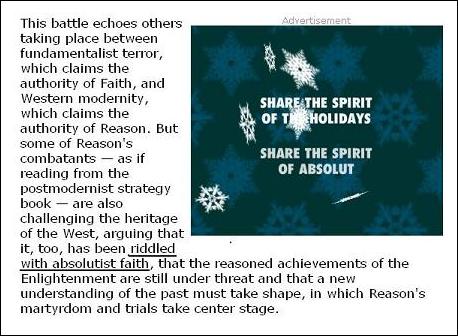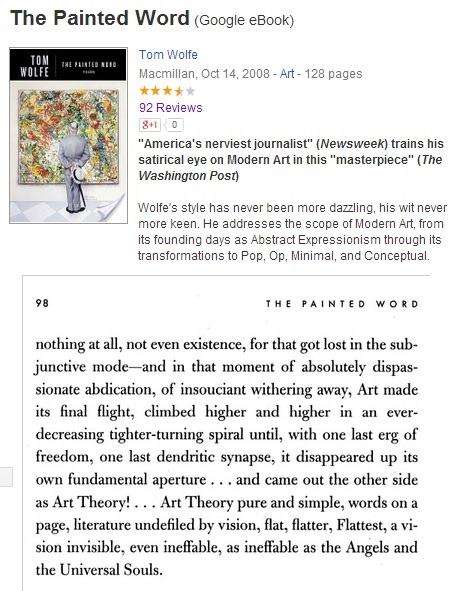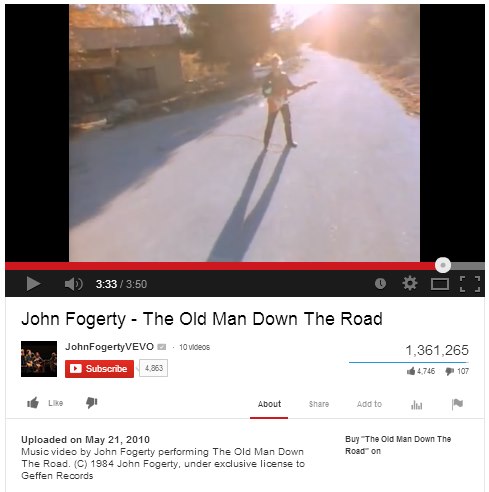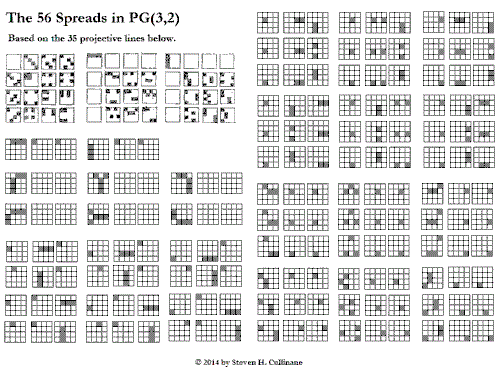Friday, January 31, 2014
From The Diamond and the Star , by John Warden*
(London, Shepheard-Walwyn Ltd., June 1, 2009) —
(The quotation is from Kipling's "The Conundrum of the Workshops.")

Answer — Some would say "Yes."
Part I: From a search for "Diamond Star" in this journal —
The Diamond Star

Part II: From the Facebook photos of Oslo artist Josefine Lyche—

* Obituary link, added at 10:45 PM ET Jan. 31 after reading a publisher's note
saying that "The author sadly died before the book was published."
Perhaps sadly, perhaps not.
Comments Off on Diamond Star
Two approaches to "Great Delight"
Part I: Curtis —

Part II: Morrow —

Despite the phrase "Diamond mandala," my own interests
lie with Curtis, not Morrow. See (for instance) a post of
Dec. 14, 2013.
Comments Off on Mandala Symbolism

See also Nicole Kidman as an earlier Black Widow.
Comments Off on Uneven Break
"When will they ever learn?"
— Rhetorical question by the late Pete Seeger
NY Times logo for its Learning Network feature —

Frances McDormand in Burn After Reading —

The Times pieces that inspired the above selection —

See also Mr. Arlington's date of death, January 16,
and Mr. Burns's date of death, January 26.
Comments Off on The Learning Network
Thursday, January 30, 2014
Continues…

Other Times content — ("O Me!") —

Other non -Times content — ("O Life!") —
The author of the above pairing has suggested a topic she
seems ill-prepared to discuss — poetry and psychosis.
Her background is in grade-school education.
For one possible result when grade-school education
meets psychosis, see Log24 posts tagged Danvers.
For better-informed discussion of the relation of poetry
to psychological states that are more normal, see (for instance)
Roberts Avens on James Hillman.
Comments Off on Blackboard Jungle
From Fritz Leiber's 1959 sci-fi classic "Damnation Morning" —
She drew from her handbag a pale grey
gleaming implement that looked by quick turns
to me like a knife, a gun, a slim sceptre, and a
delicate branding iron— especially when its tip
sprouted an eight-limbed star of silver wire.
“The test?” I faltered, staring at the thing.
“Yes, to determine whether you can live in the
fourth dimension or only die in it.”
Related 1962 drama from the Twilight Zone —
"He's a physicist, maybe he can help us out."

See also Step.
Comments Off on Test
Wednesday, January 29, 2014
(Continued from Saturday)

Huizenga reportedly died on Saturday.
Comments Off on Step
"It's going to be accomplished in steps,
this establishment of the Talented
in the scheme of things."
— To Ride Pegasus ,
by Anne McCaffrey (Radcliffe '47)

From a post of Jan. 11, 2012 —
Tension in the Common Room—

Comments Off on Nobel Note
"Where have all the flowers gone?"
— Rhetorical question by Pete Seeger
"It was 1964, a critical juncture in Radcliffe's history."
— Elaine DeLott Baker in an historical account
of the 1964 Rick Fields incident mentioned in
yesterday's 5:01 AM Pete Seeger post.
Baker, the young woman caught in bed with
Fields, interests me much less than another
Radcliffe student…
Thanks to HOLLIS, here is an image from the
Freshman Register of the Radcliffe College
Class of 1964 (a publication from, of course,
1960, not 1964) —

See Collinge in this journal. She didn't know me
from Adam, but the above image has been in my
memory for some time.
Since we have all changed a good deal since
1960, I don't think reproducing the image is
much of an invasion of her (current) privacy.
Comments Off on An Early Facebook
Tuesday, January 28, 2014
"Chop Wood, Carry Water" —
title of a book by Rick Fields, who was
reportedly expelled from Harvard in 1964.
"From California to the New York island" —
words of a song popular among Pete Seeger fans.
Combining these phrases, we have the following
spiritual tribute to Seeger, which may be read as
a description of his obituaries in today's news.
"Chop wood, carry water
from California
to the New York island."
See also The Dharma Bums .
Comments Off on In Memory of Pete Seeger

Seeger reportedly died yesterday — Monday, Jan. 27, 2014.
|
Source: The Porterville (California) Recorder
Posted: Monday, January 27, 2014, 11:25 pm (CA time)
Associated Press
Pete Seeger, the banjo-picking troubadour who sang for migrant workers, college students and star-struck presidents in a career that introduced generations of Americans to their folk music heritage, died Monday at the age of 94.
Seeger's grandson, Kitama Cahill-Jackson, said his grandfather died peacefully in his sleep around 9:30 p.m. at New York Presbyterian Hospital, where he had been for six days. Family members were with him.
"He was chopping wood 10 days ago," Cahill-Jackson recalled.
|
From his New York Times obituary —
"Planning to be a journalist, Mr. Seeger attended Harvard,
where he founded a radical newspaper and joined the
Young Communist League."
From yesterday morning's Log24 rosemary link —
"I'll be seeing you in all the old familiar places."
Comments Off on Seeger Obits
Monday, January 27, 2014
Part I

Part II

Part III
"There's rosemary, that's for remembrance."
Comments Off on Remembrance
Sunday, January 26, 2014
A sequel to last night's link Shear —
Some dead poet's words —

The "bride's chair" is the figure illustrating Euclid's proof
of the Pythagorean theorem (click image to enlarge) —

See also…

Not since Madeline Kahn in Blazing Saddles …
Comments Off on Blazing Bride’s Chair
For the Tin Men —

The word: Shear.
Comments Off on A Dead Poet’s Word
The summoning of the spirit of Bertrand Russell
yesterday by Peter J. Cameron at his weblog
suggests a review of this weblog’s posts of
Christmas Eve, December 24-25, 2013.
(Recall that Robert D. Carmichael, who, in a book
linked to at midnight last Christmas Eve discusses
some “magic” mathematical structures,
reportedly was trained as a Presbyterian minister.
See also The Presbyterian Exorcist.)
Comments Off on A Midnight Exorcism
Saturday, January 25, 2014
In memory of actress Sarah Marshall —
"It's a big step, granted, but
it's just one step."
— The Twilight Zone , "Little Girl Lost."
See also this morning's previous post.
Comments Off on Step
The archived Java rotatable hypercube of
Harry J. Smith is no longer working.
For an excellent JavaScript replacement,
see Pete Michaud's
http://petemichaud.github.io/4dhypercube/.

This JavaScript version can easily be saved.
Comments Off on Rotatable Hypercube
Friday, January 24, 2014
A One-Frame Film —

Comments Off on The Footnote:
Israel and Nobel —
For the former, see the life of Shulamit Aloni,
who reportedly died today.
For the latter, see the life of Yasunari Kawabata,
who reportedly died in 1972.
Illustrations —
From post 1424, linked to last night…

and from 2004…

Comments Off on Prizes —
Thursday, January 23, 2014
Continued from remarks of Marissa Mayer at Davos last year —

Related material — This evening's NY lottery…

… and Log24 post number 1424 —

Comments Off on Shining Forth
From this journal on Dec. 20, 2003 ("White, Geometric, and Eternal") —
Riddled:
The Absolutist Faith
of The New York Times

See also Dead Poets' Word and A Riddle for Davos, as well as…

Comments Off on Riddled
Continued from Epiphany* —
Today's New York Times Word of the Day is "lexicon."

* The word "lexicon" appeared in a Log4 post of Epiphany, 2014, but
only within a link— "a bareword "— to a search for Barry + Lexicon.
Comments Off on Bareword
Dark Epiphanies
Part I:

Part II:
"A Little Boy and a Little Girl," by Hans Christian Andersen
(second story of the seven that make up The Snow Queen )
Part III:
A former Snow White —

Comments Off on For the Snow Queen —
Wednesday, January 22, 2014
Hexagonale Unwesen

Einstein and Thomas Mann, Princeton, 1938

See also the life of Diogenes Allen, a professor at Princeton
Theological Seminary, a life that reportedly ended on the date—
January 13, 2013— of the above Log24 post.
January 13 was also the dies natalis of St. James Joyce.
Some related reflections —

"Praeterit figura huius mundi " — I Corinthians 7:31 —

|
Conclusion of of "The Dead," by James Joyce—
The air of the room chilled his shoulders. He stretched himself cautiously along under the sheets and lay down beside his wife. One by one, they were all becoming shades. Better pass boldly into that other world, in the full glory of some passion, than fade and wither dismally with age. He thought of how she who lay beside him had locked in her heart for so many years that image of her lover's eyes when he had told her that he did not wish to live.
Generous tears filled Gabriel's eyes. He had never felt like that himself towards any woman, but he knew that such a feeling must be love. The tears gathered more thickly in his eyes and in the partial darkness he imagined he saw the form of a young man standing under a dripping tree. Other forms were near. His soul had approached that region where dwell the vast hosts of the dead. He was conscious of, but could not apprehend, their wayward and flickering existence. His own identity was fading out into a grey impalpable world: the solid world itself, which these dead had one time reared and lived in, was dissolving and dwindling.
A few light taps upon the pane made him turn to the window. It had begun to snow again. He watched sleepily the flakes, silver and dark, falling obliquely against the lamplight. The time had come for him to set out on his journey westward. Yes, the newspapers were right: snow was general all over Ireland. It was falling on every part of the dark central plain, on the treeless hills, falling softly upon the Bog of Allen and, farther westward, softly falling into the dark mutinous Shannon waves. It was falling, too, upon every part of the lonely churchyard on the hill where Michael Furey lay buried. It lay thickly drifted on the crooked crosses and headstones, on the spears of the little gate, on the barren thorns. His soul swooned slowly as he heard the snow falling faintly through the universe and faintly falling, like the descent of their last end, upon all the living and the dead.
|
Comments Off on A Riddle for Davos
Tuesday, January 21, 2014
Click images for related material.


"Oh, I've got a field!
I can build walls!"
Comments Off on Walls
A NY Times researcher from this morning’s previous post
tweeted last fall about art forgery and China.

Related material — Art Cube.

Illustration from December 25, 2013.
Comments Off on Class of 64
For Marissa, continued from Jan. 13—
"Killer App" —
By David Barboza in today's print NY Times.
Stephanie Yifan Yang contributed research.
A version of this article appears in print on January 21, 2014,
on page B1 of the New York edition with the headline:
A Popular Chinese Social Networking App Blazes Its Own Path.
Another path —

See also Chinese Oracle.
Comments Off on Museum Quality
Monday, January 20, 2014

Today's online Washington Post —
"In 1973, Mr. Pike was credited with single-handedly grounding
a $14 million program that awarded extra pay for flight duty to
generals and admirals who never piloted anything more
aerodynamic than a desk at the Pentagon.
Standing on the floor of the House with his arms outstretched
like a plane in flight, Mr. Pike used mockery to plead his case."
— Matt Schudel, 2:38 PM ET
Comments Off on American Oracle
Comments Off on Chinese Oracle
Review —
From a Jan. 20, 2011, Emory University press release —
"Finite formula found for partition numbers" —
"We found a function, that we call P, that is like
a magical oracle," Ono says. "I can take any number,
plug it into P, and instantly calculate the partitions
of that number. P does not return gruesome numbers
with infinitely many decimal places. It's the finite,
algebraic formula that we have all been looking for."
Some may prefer Chinese oracles.
Comments Off on Japanese Oracle
Sunday, January 19, 2014
Comments Off on Deep Beauty
Saturday, January 18, 2014
Suggested by an ad on tonight's SAG awards
Part I: "What will your verse be?"
Part II: (Click to enlarge) —

Part III: Marissa —

Related material — "Iahu" in Robert Graves's White Goddess
Comments Off on Dead Poets’ Word
A sequel to last night's post The 4×4 Relativity Problem —

In other words, how should the triangle corresponding to
the above square be coordinatized ?
See also a post of July 8, 2012 — "Not Quite Obvious."
Context — "Triangles Are Square," a webpage stemming
from an American Mathematical Monthly item published
in 1984.
Comments Off on The Triangle Relativity Problem
Friday, January 17, 2014
The sixteen-dot square array in yesterday’s noon post suggests
the following remarks.
“This is the relativity problem: to fix objectively a class of
equivalent coordinatizations and to ascertain the group of
transformations S mediating between them.”
— Hermann Weyl, The Classical Groups ,
Princeton University Press, 1946, p. 16
The Galois tesseract appeared in an early form in the journal
Computer Graphics and Art , Vol. 2, No. 1, February 1977—

The 1977 matrix Q is echoed in the following from 2002—

A different representation of Cullinane’s 1977 square model of the
16-point affine geometry over the two-element Galois field GF(2)
is supplied by Conway and Sloane in Sphere Packings, Lattices and Groups
(first published in 1988) :

Here a, b, c, d are basis vectors in the vector 4-space over GF(2).
(For a 1979 version of this vector space, see AMS Abstract 79T-A37.)
See also a 2011 publication of the Mathematical Association of America —

Comments Off on The 4×4 Relativity Problem
Thursday, January 16, 2014
Today’s 11 AM (ET) post was suggested by a New York Times
article, online yesterday, about art gallery owner Lisa Cooley.
A check of Cooley’s website yields the image below,
related to Beckett’s Molloy .
For the relevant passage from Molloy , click the following:
“I took advantage of being at the seaside
to lay in a store of sucking-stones.“
For posts on Molloy in this journal, click Beckett + Molloy .

Cynthia Daignault, 2011:
The one I shall now describe, if I can…
Oil on linen, in 2 parts: 40 x 30 inches, 96 x 75 inches
Related art theory —
Geometry of the 4×4 Square

Comments Off on Confession of a Sucker
Comments Off on Unfolk Art
Wednesday, January 15, 2014
Comments Off on Master Class
From "Entertainment," a 1981 story by M. A. Foster—
|
"For some time, Cormen had enjoyed a peculiar suspicion, which he had learned from his wanderings around the city, and cultivated with a little notebook, in which he had made a detailed series of notes and jottings, as well as crude, but effective, charts and maps of certain districts. 'Cormen's Problem,' as it was known, was familiar to the members of the circle in which he moved; in fact, if he had not been so effective with his productions and so engaging in his personality, they might have considered him a bore.
It seemed, so the suspicion went, that the city was slowly shrinking, as evidenced by abandoned districts along the city edges. Beyond the empty houses were ruins, and beyond that, traces of foundations and street lines. Moreover, it had recently dawned on him that there were no roads out of the city, although there were no restraints. One hardly noticed this—it was the norm. But like many an easy assumption, once broken it became increasingly obvious.
Cormen's acquaintances were tolerant of his aberration, but generally unsympathetic. What he needed was proof, something he could demonstrate in black and white—and color if required. But the city was reluctant, so it appeared, to give up its realities so easily. The Master Entertainment Center, MEC, would not answer direct queries about this, even though it would obediently show him presentations, pictorial or symbolic as he required, of the areas in question. But it was tiresome detail work, in which he had to proceed completely on his own."
|
Lily Collins in City of Bones (2013)—


American Folk Art (see August 23, 2011) —

Art Theory —

See as well Ballet Blanc .
Comments Off on Entertainment Theory
Tuesday, January 14, 2014
The premiere of the Lily Collins film Abduction
(see previous post) was reportedly in Sydney, Australia,
on August 23, 2011.
From that date in this journal—

For the eight-limbed star at the top of the quaternion array above,
see "Damnation Morning" in this journal—
She drew from her handbag a pale grey gleaming
implement that looked by quick turns to me like
a knife, a gun, a slim sceptre, and a delicate
branding iron—especially when its tip sprouted
an eight-limbed star of silver wire.
“The test?” I faltered, staring at the thing.
“Yes, to determine whether you can live in
the fourth dimension or only die in it.”
— Fritz Leiber, short story, 1959
|
Related material from Wikipedia, suggested by the reference quoted
in this morning's post to "a four-dimensionalist (perdurantist) ontology"—
"… perdurantism also applies if one believes there are temporal
but non-spatial abstract entities (like immaterial souls…)."
Comments Off on Release Date

Elizabeth Taylor in National Velvet (1944),
Lily Collins in Abduction (2011).
Comments Off on Mirror, Mirror
Continued from yesterday's 9 PM (ET) post.

Here KR stands for Knowledge Representation .
See also some ontology remarks by Marissa Mayer.
Comments Off on OWL Time Ontology
Monday, January 13, 2014
"I don't like odd numbers, and I really don't like primes."
— Marissa Mayer
See Cube Symmetry Axes in this journal.

Comments Off on A Prime for Marissa
(Continued)
"In City-Now, there's no time reference,
so you can't trace things."
— "Entertainment," by M. A. Foster, first published in 1981
in New Voices 4 , edited by George R. R. Martin, reprinted
in Foster's Owl Time: A Collection of Fictions (DAW, 1985)

Comments Off on Where Entertainment Is God

"Marissa, we picked up an unencrypted signal
below the Arctic Circle." — Hanna (2011)

"We have a clip." — Kalle (Kristen Wiig on SNL)

Comments Off on Museum Quality
Sunday, January 12, 2014
"And in the Master's chambers…" — Eagles
Related fiction — Amy + Dinner and today's previous post.
Related non-fiction — a page of pure mathematics —

Comments Off on The Feast
Midrash on yesterday's midday NY lottery:

"Everybody's doin' a brand new dance now…"
Comments Off on At the Still Point
Saturday, January 11, 2014
Comments Off on Star Wars (continued)
Friday, January 10, 2014

My own Star story would be somewhat different,
more concerned with inner than with outer space.
See Lucero in this journal.
Comments Off on The Secret Life of Don DeLillo
… Continues. See today's MAA news story about magic,
mystery, and the upcoming Joint Mathematics Meetings.
Comments Off on The Dark Mirror…
The reference to David Justice at the beginning of
yesterday afternoon's post does not imply an
endorsement of all his writings. For instance, a
Justice post from yesterday contains the following—

Correction—
The above author name and page number are wrong.

Related to the above "fundamental theme" —
Midsummer Geometry.
Comments Off on Department of Corrections
Thursday, January 9, 2014
Suggested, in part, by a Jan. 8 post of David Justice—

Eames in Inception , about planting an idea—
“It’s not just about depth.
You need the simplest version of the idea,
the one that will grow naturally
in the subject’s mind.
It’s a very subtle art.”
Comments Off on Depth Psychology
Comments Off on Innocence by Association
Comments Off on Digital Member

Meanwhile, at a different office…

Click (or tap) Marissa for The Story of N.
Comments Off on Therapy
The title refers to yesterday’s 9 PM (ET) post.
” ‘Relax,’ said the night man. ” — Eagles
“With a style evoking the golden age of Hollywood…”
See also Hollywood Glam.
Comments Off on Cultural Programming
Wednesday, January 8, 2014
(Continued)
Three Notes on Design
1. From the Museum of Modern Art today—
“It’s a very nice gesture of a kind of new ethos:
To make publicly accessible, unticketed space
that is attractive and has cultural programming,”
Glenn D. Lowry, MoMA’s director, said.
2. From The New York Times today—

3. From myself last December—

Comments Off on Occupy Space
The title refers to that of today's previous post, which linked to
a song from the June 1, 1983, album Synchronicity .
(Cf. that term in this journal.)
For some work of my own from the following year, 1984, see…

… as well as the Orwellian dictum Triangles Are Square.
(The cubical figure at left above is from the same month,
if not the same day, as Synchronicity — June 21, 1983.)
Comments Off on Not Subversive, Not Fantasy
Maureen Dowd on "Downton Abbey"
(yesterday's online NY Times) —
"Watching the saga from the beginning this week,
I saw the extent of the subversive fantasy:
The servants rule the masters."
"I have only come here seeking knowledge."
— Sting, "Wrapped Around Your Finger"

Comments Off on Subversive Fantasy
"The first credential
we should demand of a critic
is his ideograph of the good."
– Ezra Pound,
How to Read
A spoiler from the 1974 novel in last night's post
"Last Year's Valentine"—
|
Near the conclusion of Charles Johnson's novel
Faith and the Good Thing—
"She was more than any one path, or the total of them all. She would glean from each its store of the Good Thing, would conjure it up: the enthusiasm and naïveté of youth, the self-sacrifice of the streetwalker, and the love that even the most miserable housewife received— exhausting them, moving on to another path, and another. That was life, children. And when she’d traveled the existing paths, she would create a new, untrodden one. That was progress. If she discovered X number of paths and traveled them all, then she, before she died, would leave X-plus-1. That was responsibility: factoring the possible number of paths to the Good Thing, but not becoming fixed, or held to those paths in her history, or the history of the race. Moving always on . . ."
|
I prefer Sinatra's version.
Comments Off on Moving On…
A review…
1. Of posts a year ago today
2. Of posts from last year's Valentine Day
A preview…
"It is time to tell you of Faith and the Good Thing."
— Charles Johnson, opening sentence of
Faith and the Good Thing: A Novel .
(Viking Books, Oct. 21, 1974, republished as a
Scribner Classics edition in January 2001.)
See as well some of my own notes from 2001.
Comments Off on Last Year’s Valentine
Tuesday, January 7, 2014
The first story of "The Snow Queen, in Seven Stories"
by Hans Christian Andersen (1845) (see yesterday morning)—
|
Story the First,
Which Describes a Looking-Glass
and the Broken Fragments
You must attend to the commencement of this story, for when we get to the end we shall know more than we do now about a very wicked hobgoblin; he was one of the very worst, for he was a real demon. One day, when he was in a merry mood, he made a looking-glass which had the power of making everything good or beautiful that was reflected in it almost shrink to nothing, while everything that was worthless and bad looked increased in size and worse than ever. The most lovely landscapes appeared like boiled spinach, and the people became hideous, and looked as if they stood on their heads and had no bodies. Their countenances were so distorted that no one could recognize them, and even one freckle on the face appeared to spread over the whole of the nose and mouth. The demon said this was very amusing. When a good or pious thought passed through the mind of any one it was misrepresented in the glass; and then how the demon laughed at his cunning invention. All who went to the demon’s school—for he kept a school—talked everywhere of the wonders they had seen, and declared that people could now, for the first time, see what the world and mankind were really like. They carried the glass about everywhere, till at last there was not a land nor a people who had not been looked at through this distorted mirror. They wanted even to fly with it up to heaven to see the angels, but the higher they flew the more slippery the glass became, and they could scarcely hold it, till at last it slipped from their hands, fell to the earth, and was broken into millions of pieces. But now the looking-glass caused more unhappiness than ever, for some of the fragments were not so large as a grain of sand, and they flew about the world into every country. When one of these tiny atoms flew into a person’s eye, it stuck there unknown to him, and from that moment he saw everything through a distorted medium, or could see only the worst side of what he looked at, for even the smallest fragment retained the same power which had belonged to the whole mirror. Some few persons even got a fragment of the looking-glass in their hearts, and this was very terrible, for their hearts became cold like a lump of ice. A few of the pieces were so large that they could be used as window-panes; it would have been a sad thing to look at our friends through them. Other pieces were made into spectacles; this was dreadful for those who wore them, for they could see nothing either rightly or justly. At all this the wicked demon laughed till his sides shook—it tickled him so to see the mischief he had done. There were still a number of these little fragments of glass floating about in the air, and now you shall hear what happened with one of them.
|
"Was there more to come? Was I done?
I wondered if I had dreamed
the connectedness of Being
the night before, or if now, awake,
I dreamed distinctions.
I didn’t know where I was for an instant."
— "Alethia," by Charles Johnson, as
quoted by Eve Tushnet on Aug. 22, 2013
Tushnet on Johnson —
"Somebody–I hope a commenter will remind me who it was–
has suggested that the Left typically thinks in terms of an
opposition between oppression and liberation, whereas
the right typically thinks in terms of an opposition between
civilization and barbarism. I would reframe the latter opposition
as order vs. chaos; if we do that, it’s obvious that both
oppositions are unrelentingly relevant, yet few thinkers or artists
are able to hold both conflicts before our eyes at once.
I just finished Charles Johnson’s 1986 short-story collection
The Sorcerer’s Apprentice: Tales and Conjurations ,
a bag of broken glass which is equal parts liberationist and
reactionary, yearning for freedom and knuckling under to fatalism."
Related material —
|
Saturday Night Live, Dec. 11, 1976
Consumer Reporter: Alright. Fine. Fine. Well, we'd like to show you another one of Mr. Mainway's products. It retails for $1.98, and it's called Bag O' Glass. [ holds up bag of glass ] Mr. Mainway, this is simply a bag of jagged, dangerous, glass bits.
Irwin Mainway: Yeah, right, it's you know, it's glass, it's broken glass, you know? It sells very well, as a matter of fact, you know? It's just broken glass, you know?
Consumer Reporter: [ laughs ] I don't understand. I mean, children could seriously cut themselves on any one of these pieces!
Irwin Mainway: Yeah, well, look – you know, the average kid, he picks up, you know, broken glass anywhere, you know? The beach, the street, garbage cans, parking lots, all over the place in any big city. We're just packaging what the kids want! I mean, it's a creative toy, you know? If you hold this up, you know, you see colors, every color of the rainbow! I mean, it teaches him about light refraction, you know? Prisms, and that stuff! You know what I mean?
|
Tommy Lee Jones perhaps knows what Mainway means.
Kristen Wiig (see Aug. 22, 2013, in this journal) perhaps does not.
See also Tushnet on The Man in the High Castle as well as
Tommy Lee Jones and Hexagram 61.
Comments Off on See More Glass
Monday, January 6, 2014
"I'm sorry to be catechizing you like this."
— The girl in "What Dead Men Tell," by Theodore Sturgeon

Q —
"Why walk when you can fly?"
— Mary Chapin Carpenter
A —
A definition —

And a song — Bing Bang…
See also Watch the Trailer.
Comments Off on For the Padres
"… the human will cannot be simultaneously
triumphant and imaginary."
— Ross Douthat, Defender of the Faith,
in this afternoon's New York Times at 3:25* PM ET
Some— even some Catholics— might say the will
cannot be triumphant unless imaginary.
Related material: The Galois Quaternion: A Story.
See also C. S. Lewis on enchantment.
* Cf., in this journal, the most recent 3/25 ,
and a bareword —

Click image for some context.
Comments Off on Triumph of the Will
Comments Off on Für Elise
Sunday, January 5, 2014
And for Scarlett — A Venus Flytrap
From last evening's John Fogerty 1984 video —

From this morning's paper —

Click the soup for some backstory.
"Assume a can opener."
Comments Off on For Amy…
Wikipedia on a Springsteen album released on
this date in 1973—
"… when Columbia Records president Clive Davis
heard the album, he felt that it lacked a hit single.
As such, Springsteen wrote and recorded
'Blinded by the Light' and 'Spirit in the Night.' "
The upload dates from the above links are also dates
of some posts in this journal— Thursday, June 26, 2008,
and Sunday, July 6, 2008.
Comments Off on Hits
… que cantaba el rey David.
Update of 7 AM Jan. 5— See also Endor's Game.
Comments Off on Little Mornings…
Saturday, January 4, 2014
(Continued)

See also the above upload date in this journal.
"You've got to pick up every stitch." — Donovan
Comments Off on Nine is a Vine
Comments Off on Heaven’s Gate
The late Adam Smith:
"Assume a can opener."
Wikipedia:
"The festival opened with The Great Gatsby ,
directed by Baz Luhrmann."

Midrash on an earlier film version (Mira Sorvino's, 2000):
"Daisy, when she comes to tea at Nick's house,
refers to the flowers brought by Gatsby as being
appropriate for a funeral and asks 'Where's the corpse?'
Gatsby enters immediately thereafter. This foreshadows
what will happen to Gatsby. The dialogue is not in the novel…."
— Learning Guide to The Great Gatsby
Correction to the midrash:
Sorvino actually says, when there is a knock at the door,
"That must be the corpse."

Jersey girls are tough.
Update of Candlemas, 2014, in memory of Philip Seymour Hoffman—

Comments Off on Learning Guide
Comments Off on For Adam Smith
A Souther song at YouTube.
See also the lyrics and, in this journal,
synchronicity on the uploading date.
Related art —
End of the Line Blues

and The Crosswicks Curse

Comments Off on For Phil Everly
Friday, January 3, 2014
The title is a reference to a post of a year ago today.
From a page linked to in that post—
"It was a time when American celebrities
still resembled girls and boys next door
and when chart-toppers were manufactured
to appeal to listeners of all ages."
See also a Saturday Evening Post —

“Let’s give ‘em somethin’ to talk about,
A little mystery to figure out”
– Scarlett Johansson singing on
Saturday Night Live, April 21, 2007
Comments Off on You’re Doin’ Fine, Oklahoma
Thursday, January 2, 2014
Comments Off on Sweet Home Alabama…


Amy Adams in this journal on April 26, 2013 —

"Do the words 'mullet toss' mean anything to you?"
Comments Off on Annals of Photography
Wednesday, January 1, 2014

Click for a larger image.
For a different pictorial approach, see Polster's
1998 Geometrical Picture Book , pp. 77-80.
Update: Added to finitegeometry.org on Jan. 2, 2014.
(The source of the images of the 35 lines was the image
"Geometry of the Six-Element Set," with, in the final two
of the three projective-line parts, the bottom two rows
and the rightmost two columns interchanged.)
Comments Off on The 56 Spreads in PG(3,2)







































































































